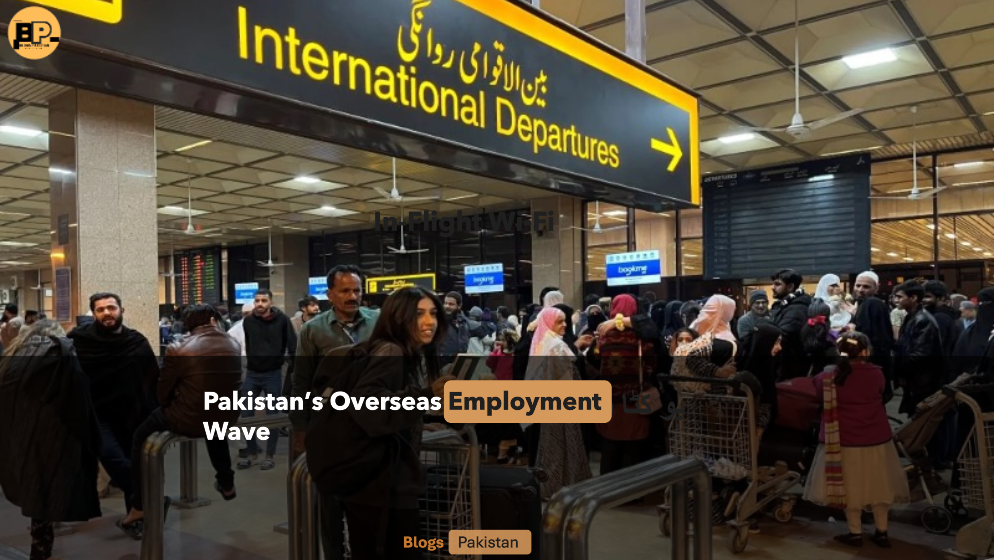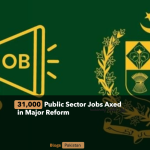The first quarter of 2025 has marked a pivotal moment for Pakistan’s labor market, with an unprecedented 172,144 citizens securing employment abroad. This surge highlights a growing reliance on overseas opportunities amid domestic economic challenges. From skilled technicians to medical professionals, Pakistan’s workforce is casting a wider net globally. Let’s dive into the destinations, professions, and underlying factors shaping this migration wave—and what it means for the nation’s future.
Where Are Pakistani Workers Heading? Breaking Down the Top Destinations
The Bureau of Immigration’s latest data reveals a clear geographic pattern in Pakistan’s overseas employment trends.
The Gulf Dominance: Saudi Arabia Leads the Pack
Unsurprisingly, Saudi Arabia remains the top magnet, absorbing 121,190 workers—over 70% of the total. The Kingdom’s Vision 2030 reforms, which prioritize infrastructure and tourism, continue to drive demand for labor. From construction sites to hospitality sectors, Pakistani workers are filling critical roles.
Oman and UAE: Steady Demand for Skilled Labor
Oman attracted 8,331 workers, many employment in logistics and manufacturing, while the UAE welcomed 6,891, primarily in retail and services. Both nations offer competitive wages and streamlined visa processes, making them accessible for mid-skilled workers.
Qatar’s Rising Appeal
Qatar’s 12,989 Pakistani hires reflect its post-World Cup economic expansion. Mega-projects like Lusail City and ongoing World Cup infrastructure maintenance are key employment drivers.
Beyond the Gulf: Europe and Asia
- The UK: 1,454 workers, largely in healthcare and IT.
- Turkey and Greece: 870 and 815 respectively, with opportunities in textiles and agriculture.
- East Asia: Japan (108) and China (592) are emerging hubs for engineers and tech professionals.
Who’s Leaving? A Look at Professions and Skills
The exodus isn’t limited to manual labor. Pakistan is losing both its unskilled workforce and highly trained professionals.
The Backbone: General Laborers and Tradesmen
A staggering 99,139 individuals were classified as general Employment , underscoring the demand for construction and factory workers in Gulf nations. Skilled trades also saw significant numbers:
- 38,274 drivers (reflecting Gulf logistics growth).
- 1,859 masons, 2,130 electricians, and 1,058 welders (aligned with infrastructure projects).
The Professional Drain: Doctors, Engineers, and Educators
- 849 doctors and 1,479 engineers sought opportunities abroad, lured by better salaries and facilities.
- 436 teachers and 390 nurses also left, highlighting systemic issues in Pakistan’s education and healthcare sectors.
This “brain drain” poses long-term risks for Pakistan’s development, as skilled professionals critical to national growth opt for greener pastures.
The EU Asylum Puzzle: Legal vs. Illegal Pathways
While legal migration surges, 28,000 Pakistanis applied for asylum in the EU+ between October 2023 and October 2024. Though applications dropped from 3,400 to 1,900 monthly, the trend reveals a darker undercurrent: illegal smuggling networks.
Why the Decline in Asylum Seekers?
- Stricter EU border policies post-2023.
- Increased awareness of legal migration channels.
- Crackdowns on human traffickers in key provinces like Punjab and Sindh.
However, smuggling routes through Iran and Turkey persist, driven by desperation and misinformation.
Economic Drivers Employment : Why Pakistanis Are Leaving Home
Unemployment and Inflation
Pakistan’s 9.5% unemployment rate and 38% inflation in 2024 have made basic necessities unaffordable for many. Overseas jobs offer not just stability but wages 3–4 times higher than local salaries.
Remittances: A Lifeline for Families
Migrants sent home $32 billion in 2024, a crucial buffer for Pakistan’s dwindling foreign reserves. Saudi Arabia alone contributed 62% of these inflows.
Government Responses: Bridging Gaps and Building Partnerships
Expanding Legal Migration Channels
Pakistan has signed 15 new bilateral agreements since 2023, focusing on:
- Skill standardization: Aligning certifications with GCC requirements.
- Pre-departure training: Language courses and cultural sensitivity programs.
Cracking Down on Smuggling
Authorities dismantled 23 trafficking rings in 2024, rescuing over 1,200 migrants. Public awareness campaigns now target rural areas where smuggling thrives.
The Road Ahead: Opportunities and Challenges
Short-Term Gains vs. Long-Term Costs
While remittances boost GDP, the loss of skilled workers hampers sectors like healthcare. Pakistan Employment has only 0.6 doctors per 1,000 people—well below the WHO’s 1:1,000 recommendation.
Harnessing Diaspora Expertise
Initiatives like Roshan Digital Account 2.0 aim to engage overseas professionals in mentorship and investment programs. Early results show promise, with $200 million invested in tech startups by expats in Q1 2025.
Industry Reactions: Employers and Economists Weigh In
- Construction Firms: “Delays in projects like CPEC Phase II are pushing workers abroad.”
- Healthcare Associations: “We’re training 40% more nurses yearly, yet 60% leave within five years.”
- Economists: “Without structural reforms, migration will remain a release valve for economic pressure.”
Global Implications: A Shift in Labor Dynamics
Pakistan’s workforce is becoming integral to global economies:
- Gulf nations rely on Pakistani labor for 30% of their construction sectors.
- The UK’s NHS now employs 12,000 Pakistani doctors, up 18% since 2023.
As borders tighten and automation rises, however, the sustainability of this model is uncertain.
Voices from the Ground: Migrant Stories
- Ali Raza, Mason in Riyadh: “I earn $800/month here—triple my Pakistan salary.”
- Dr. Ayesha Khan, London: “The lack of research funding back home pushed me out.”
- Fatima Ahmed, Asylum Seeker in Germany: “I risked the journey because I saw no future.”
These narratives underscore the complex calculus behind every decision to leave.
Technology’s Role: Apps and Platforms Facilitating Migration For Employment
Startups like Rozgar365 and VisaXpress are streamlining the process:
- AI-powered job matching: Connecting workers to employers in under 48 hours.
- Blockchain contracts: Ensuring transparency in wage agreements.
Such tools are reducing reliance on exploitative middlemen.
Climate Factors: An Emerging Driver
2024’s catastrophic floods displaced 2 million Pakistanis, with many victims turning to overseas jobs for recovery. Climate-induced migration is projected to rise, particularly in agrarian regions like Sindh.










